|
In 1745, Fr. Alban Butler produced his collection of the Lives of the Saints. It’s been in circulation ever since, providing the faithful with stories of holy men and women as exemplars to imitate. Oftentimes, the stories in the volumes of the Lives of the Saints do not seem to portray real human beings. The brief passages list only miracles and pious deeds. Sometimes I feel that the examples used could even make the sweet St. Therese, the Little Flower, look positively scandalous in comparison! This is not to say that Fr. Butler’s work is in vain. It is good that these names are recorded for us. As we celebrate All Saints’ Day, we should honor those who came before us and passed down the faith from generation to generation. But this feast day raises the question: what is a saint? The process of canonization tells us that we know when a certain person is surely in Heaven and that their life is worth imitating, but there are more unrecognized saints than those that are recognized. Saints are people who, through the course of their lives, have grown into the image of themselves which God holds in His divine mind. They become who they were created to be in the fullest sense. The marvelous thing about saints is that they were real, gloriously messy, complex human persons. If we believe every human being is an unrepeatable expression of God’s love, then it stands to reason that every saint is an unrepeatable example of what it means to live out of that love. I think too often we get concerned with trying to imitate certain saints, like St. Therese, and forget to discover who we were created to be. You cannot be St. Therese: Part 2, or Bl. Pier Giorgio Frassati 2.0. Those roles have been taken because those two individuals had the humility to see the greatness God was inviting them into. They stepped into the journey of becoming who they were meant to be. Dr. Gianna Molla, known for giving her life to save her infant daughter’s, was not a saint because of that one action. Her life was steeped in holiness. She was a doctor, a mother, a lover of fashion, and apparently a terrible driver. But as much as I want to be her when I grow up, I can’t. I will never be a doctor, for one thing. What I can do is find pieces of my personality in hers, and I can learn from her example of how she lived and how she handled certain situations and use those lessons in my own life—much like getting advice from an older sister. Holy lives are not replicas of each other. You cannot program holiness by inserting a set of statutes, commands, circumstances, or ideals into people. Pope Emeritus Benedict XVI, in his General Audience on April 13, 2011, said “Holiness, the fullness of Christian life, does not consist in carrying out extraordinary enterprises but in being united with Christ, in living his mysteries, in making our own his example, his thoughts, his behavior” (emphasis mine). We are called to live as Christ in a particular manner, in this particular time, with our own particular gifts. I cannot be you and you cannot be me. But I need you to be the person God has called you to be because we are part of the same mystical Body of Christ, alongside the saints. Conversely, I need to become the person God created me to be as well. We will never know all of our spiritual brothers and sisters until we reach Heaven. As members of the Church triumphant, the saints want us united with God even more than we want to be with Him because they love more perfectly than we do. May we imitate their holy example and ask for their guidance in living out of the love of God more and more completely each day. Reflection Questions: Who is your favorite obscure saint? What quality of sanctity do you want to grow in this season?
0 Comments
Besides receiving and visiting Our Lord in the Blessed Sacrament at Mass and Adoration, I find that the most nourishing aspect of my spiritual life is friendship with the saints. The Church holds celebrating the saints and asking for their intercession in high regard, as the Solemnity of All Saints, which falls on November 1st each year, is a holy day of obligation. The Vigil of All Saints, then, falls on October 31st each year. One goal of the Christian is to engage in prayer with God, and prayer, simply put, is conversing with God. Each day, we can offer our work to God and talk to Him frequently. This is not always easy, though, and I have found that friendship with the saints helps immensely. A friendship, which is the mutual willing of the good between people, is cultivated with communication and time spent together. Aristotle and Shakespeare, in their genius commentaries on friendship, always return to the simplicity of authentic friendship. Developing a friendship with the saints does not need to be overly-complex. It can also be founded upon communication and time spent together, ultimately bringing us closer to God and strengthening our communication with Him. Communicating daily with the saints further orients our minds to the supernatural, to the existence of the “things…invisible” that we recite in the Creed, and it also strengthens us in the fight for our souls. By communicating with the saints, we will become more like the saints, who in their devotion to Christ became like Christ. Thus, the saints will help us to become more Christ-like. The poet Gerard Manley Hopkins gets at this point in one of his poems: I say móre: the just man justices; Keeps grace: thát keeps all his goings graces; Acts in God's eye what in God's eye he is -- Chríst — for Christ plays in ten thousand places, Lovely in limbs, and lovely in eyes not his To the Father through the features of men's faces. The “just man” is the saint, and the saint’s Christ-like actions help him to become like Christ. As I mentioned in my last blog, stories of the saints are dramas of the highest caliber. Each saint had a unique personality and found their way to heaven in their own special, grace-filled way. There are so many saints that everyone can find someone they relate to or want to emulate. Below, I have listed just a few of my friends, and I pray that they will intercede for you! Sts. Peter and Paul, St. Edmund Campion, St. Ignatius, St. John the Beloved Disciple, St. Luke, St. Catherine of Sienna, St. John Paul II, Bl. Pier Giorgio Frassati, Bl. John Henry Newman, Sts. Thomas More and John Fisher, St. Robert Southwell, St. Henry Walpole, St. Aloysius Gonzaga, St. Robert Bellarmine, St. John Berchmans, St. Francis Xavier, St. Leo the Great, St. Augustine, St. Vincent Pallotti, St. Thomas Aquinas, St. Therese of Lisieux, St. Teresa of Avila, St. Josemaria Escriva, St. John Vianney, St. Joseph, Guardian Angels, Our Lady… Ora pro nobis! Working in parish ministry can be extremely rewarding, however, it can also become consuming and drain you spiritually, physically, and emotionally. We live to serve, love to create and often times find ourselves at the battlefront of spiritual warfare. Take a moment to ask yourself honestly, “Am I taking time to replenish myself?” It can be difficult to take a step back and focus our time and energy on our own revitalization. We get so used to giving of our time and ourselves to the work of the church that we may feel guilty if we turn those energies on ourselves. We all know the physiological and psychological benefits of exercise. Is it possible to reap a spiritual benefit? 1 Corinthians 6:19 states that our body is not our own. I am a firm believer that degradations of the soul and body affect one another. 1 Corinthians 6:13 teaches us that the body is for the Lord and the Lord is for the body. Although the health of our interior spiritual life should always take precedence over everything, I urge you to keep the health of your corporal life, your bodily life, a close second. In both the Nicene and Apostle’s Creed, we profess a belief in the resurrection. But do we live out that belief? Our salvation story as the adopted sons and daughters of Christ is not over yet, including the story of our loved ones that have fallen asleep in Christ. We believe in a second coming. We believe that when this earth passes away, we will be united, body and soul, into heaven if we have attained sanctification. We, as the body of Christ and communion of saints, are still in this together. Do we continue to pray for the dead outside of Mass? Do we implore the saints and angels for help and intercession? Do we offer daily mortifications and prayers for the salvation of souls? What about ourselves? We just recently celebrated All Saints Day and All Souls Day. I would like to present a challenge to you. Regardless of whether you are a disciplined exerciser, just beginning, or struggling to get back into the habit, turn your intention and your purpose to the salvation of souls. Schedule this time into your day just as you would an appointment or your personal prayer time. When you take your walk, follow your workout DVD, lift weights, go swimming, whatever medium you choose for your exercise, mentally offer this sacrifice of your time, energy, and focus for the salvation of souls. When you feel like there are one thousand other things you should be doing with your time, remember why you scheduled it. When you start to get tired during your workout say to yourself, “Lord Jesus have mercy on me and all souls in purgatory.” Uniting the discipline of our exercise with a prayer intention as powerful as the salvation of souls, strengthens your body and mind so that you can better carry out your calling on this earth. Through this purposeful action, you are also imploring God to grant relief to the poor souls in purgatory. So my fellow ministers, yes, give of yourselves unceasingly but be aware of the ways that we can still give of ourselves while nourishing, strengthening, and reenergizing our body so that we are better focused and able to carry out our calling on this earth so that when our day of judgement comes we can hear the sweetest of phrases uttered from the lips of our Savior, Matthew 25:23 “Well done my good and faithful servant.” Whenever I go about my day at the Basilica of the National Shrine of the Immaculate Conception, I am greeted by the faces of hundreds of saints illustrated in dozens of statues, mosaics, and portraits. Certainly, the focus of the Shrine — and indeed, any Catholic church — is on Christ (in this case through the Blessed Mother), but invariably one notices the honoring of God’s holy ones as well in side chapels and oratories. While one can hardly wander into the Great Upper Church of the Basilica without gazing in awe at the dominating mosaic Christ in Majesty — one of the largest images of Jesus in the world — it’s also impossible to miss the mere fraction of the Communion of Saints honored throughout the space; those who were so moved in their encounters with the Lord that they devoted their lives to the pursuit of Him. Why does this church (and the Universal Church) assign so much importance to these figures? While the act of adoration and worship is solely reserved for God, the saints (including Mary) are, by contrast, venerated. When properly done, veneration does not interfere with the worship due to God, but rather fosters it. As the Second Vatican Council noted: “Our communion with those in heaven, provided that it is understood in the fuller light of faith according to its genuine nature, in no way weakens, but conversely, more thoroughly enriches the latreutic [what is allowed to God alone] worship we give to God the Father, through Christ, in the Spirit” (Lumen Gentium 51). Hailing from all walks of life, the saints represent the fervent love of God as he calls them to participate in and enrich the ministries of the Church, whether through charity, scholarship, prayer, catechesis, or apologetics. The saints rejected the status quo of society. They reformed society to be more like Christ’s ministry — sometimes at the cost of their own lives. They met people wherever they were in life in order to bring about a fruitful encounter with the Lord. If we have ever felt that we could not strive for the holiness God calls each of us to, we surely have countless role models to look to in the saints. We might think: “But I can’t possibly attain those standards — I’m a sinner!” But as the recently canonized Mother Teresa reportedly observed, “Saints are only sinners who keep trying.” Recognizing that their own shortcomings, however frequent, are infinitesimal compared to the love and mercy of God, the saints sought and found comfort in our perfect Lord, rather than wallowing in the imperfect condition of their lives. In our own struggles for holiness, if we ever feel alone or without guidance, we have only to look to the saints for inspiration. The trials we face, whether they be doubts, abandonment, threats, or scorn were similarly faced by them. Yet the example of Christ’s experiences with these difficulties drove them forward, and so should also motivates us. We need not be intimidated with what is asked of us or the great witness of the saints. Again, in words attributed to Mother Teresa, we have only to concern ourselves with offering God “small things with great love.” In the Basilica, the bas-relief of the Universal Call to Holiness rests directly opposite of Christ in Majesty, reflecting the theme of Lumen Gentium discussed above. Illustrated in the huge marble slab are people from all walks of life gazing upon and approaching God, the Holy Spirit. As Lumen Gentium, the bas-relief, and the Catechism of the Catholic Church all emphasize: “all are called to holiness” (CCC 2013). The saints have embraced this, and not necessarily early in their lives. St. Augustine, one of the Church’s greatest converts, admitted to God in his autobiography called Confessions, “Late have I loved you, beauty so old and so new.” God can turn our failures into moments of grace at any point in our lives (Romans 5:20)! The saints did not go about the great evangelical enterprise for their own sake or glory, but to share the Mystery of God’s unceasing love that so moved them to reject what the world offers in comforts and powers. Just as Christ initiated this work on earth during His ministry and the saints have sustained it throughout the millennia, it is now entrusted to us that the light of God’s truth may forever shine bright and call back to Him those who are lost in the world’s darkness. Last week, I had the honor of attending the funeral of a young man I never had the privilege of meeting. Dominik Liam Pettey, a senior at Gonzaga College High School in Washington, D.C., died tragically and suddenly in the early morning of November 1, All Saints Day (click here to read a Washington Post article about the accident). During his funeral liturgy, held at the Basilica of the National Shrine of the Immaculate Conception and attended by over 3,500 people, Dominik was described as a faith-filled young man who was joyfully committed to his family and friends. We were told that he loved to play hockey, endured suffering with humility and patience during health issues last year, and gave of himself selflessly.
As an alumnus of a Jesuit high school and the brother of hockey players, I felt compelled to attend the funeral liturgy of a young man whose story hit very close to home. I could not help but shed several tears as the funeral progressed. As those in attendance held each other close, both physically and in prayer, I could sense their immense sadness at the loss of a child, a brother, a friend, a classmate, a teammate, a student, a beloved and devoted follower of Jesus Christ. During the month of November, we remember the souls of all the faithful departed. As we pray for the deceased, we remember that for the Lord’s faithful people, life is changed, not ended. Those who have died in Christ have entered an eternal life that is fuller and more glorious than anything we have ever experienced on earth. We who are left behind feel the emptiness of their going from us, but for them there is no more sadness or suffering or pain. If we live in the light of hope, the sadness of parting will be followed, at the end of our own lives, by a reunion in which God will “wipe away every tear from our eyes” (Revelation 21:4). We who remain will be brought together with all those who have died and see the Lord face to face. Together in heaven, we shall always be with the Lord. In a particular way, during this month dedicated to praying for the faithful departed, I have been praying for Dominik, that he may be remembered among those who have been raised by God to the fullness of life. Please pray for Dominik, and continue to pray for all the faithful departed. May Jesus Christ, who is goodness and mercy, intercede for all those who mourn the loss of Dominik, and may the souls of all the faithful departed, through the mercy of God, rest in peace. Into your hands, Father of mercies, we commend our brother Dominik in the sure and certain hope that, together with all who have died in Christ, he will rise with him on the last day. We give you thanks for the blessings which you have bestowed upon Dominik in this life: they are signs to us of your goodness and of our fellowship with the saints in Christ. Merciful Lord, turn toward us and listen to our prayers: open the gates of paradise to your servant and help us who remain to comfort one another with assurances of faith, until we all meet in Christ and are with you and our brother for ever. We ask this through Christ our Lord. Amen. -Prayer of Commendation, Order of Christian Funerals Alex R. Boucher is Program Consultant for the Catholic Apostolate Center and a seminarian studying for the Diocese of Portland, Maine. Follow Alex on Twitter at @AlexBoucher. If the title of this post sounds a bit familiar, then you probably recall this quote was some of the first words uttered by Pope Emeritus Benedict XVI when he appeared at the central balcony over St. Peter’s Square upon his election in 2005. Not too long ago, we saw that humility in even greater depth when Benedict resigned from his role as Bishop of Rome, recognizing that his “strength… has deteriorated in me to the extent that I have had to recognize my incapacity to adequately fulfill the ministry entrusted to me.” Knowing that he could no longer serve as the Vicar of Christ in the manner which he desired, and trusting in God’s will, he freely renounced his office in order for another to steer the Catholic Church.
While this act of Pope Benedict truly stands out as an act of a holy man, this is far from the only example of faith from a Roman Pontiff. As the Church celebrates the Solemnity of All Saints, it provides a moment to reflect on a few other Popes, especially in the twilight of a year which saw two Popes canonized and another beatified by Pope Francis. When Cardinal Giuseppe Roncalli entered the conclave of 1958, it is famously asserted that he had already booked his train ticket back to Venice – for he never expected to be elected by the College of Cardinals. Yet, when elected he chose the name John, partly because of John the Evangelist, the beloved of the Lord. Just the great apostle had done, St. John XXIII, too, laid himself at the service of Christ. When he first began talking about convening the Second Vatican Council, many of his contemporaries doubted it would ever occur. Nevertheless, knowing he was trying to fulfill God’s will, the pope persisted and opened the council on October 11, 1962. This was just one instance out of so many that showed what kind of person “Good Pope John” strove to be. He acted not for ovations for himself, but rather for the glory of God. In December 1963, President Lyndon Johnson awarded the Presidential Medal of Freedom posthumously to John XXIII. The President remarked, “He was a man of simple origins, of simple faith, of simple charity. In his exalted office he was still the gentle pastor…His goodness reached across temporal boundaries to warm the hearts of men of all nations and of all faiths.” One of John XXIII’s closest friends was Cardinal Giovanni Montini. Upon his election a Pope Paul VI, he continued the work of his predecessor in overseeing Vatican II. If humility and surrendering to God’s plan are signs of sanctity, then two moments stand out in the pontificate of the man now called “Blessed.” In 1963, at a Mass in St. Peter’s Basilica, Blessed Paul VI removed his tiara and placed it on the alter – a symbolic act showing that the pope not only gave up claims to temporal power on earth, but also yielded fully to the will of the Lord in heaven. Another touching example is his steadfastness after issuing his most famous encyclical, Humanae Vitae. In it, the pope reiterates the Church’s teaching on marriage and denunciation of artificial birth control. Though his words were well received in some parts of the world, the reaction was quite negative. Yet, Blessed Paul VI knew that he was reaffirming ultimate truths and that no matter the criticism, his faith would see him through. Modern history’s second longest papacy came soon after Paul VI. St. John Paul II, JPII, John Paul the Great – no matter what the title, the sentiment is the same. The faithful witnessed a saint walking among them. His magnificent sanctity was seen exquisitely in December of 1983. Two days after Christmas, the pope travelled to Rebibbia prison to meeting with Mehmet Ali Agca, the man who tried to assassinate the pontiff just two years before. During the meeting, John Paul again forgave his would-be-assassin. Years later, the Italian government pardoned Agca at the pope’s urging. This episode, too, was an example of the great faith of the Bishop of Rome. Not only did he imitate Christ’s actions two-thousand years ago, but he also gave a great model for the present day faithful. If a man could humble himself to forgive another man for trying to kill him, all the more people should forgive each other for the smaller transgressions in life. Many people consider themselves lucky to attend a papal event, watch the pope pass by them in an open vehicle, or even to just hear the pope at a Sunday Angelus. Indeed, so many others never get the opportunity to come in close contact with the Vicar of Christ. Nevertheless, a priest once said that these holy men are now even closer to the faithful than ever before because they number among the saints in heaven. The Catechism reminds us, “the union of the wayfarers with the brethren who sleep in the peace of Christ is in no way interrupted, but on the contrary, according to the constant faith of the Church…those who dwell in heaven fix the whole Church more firmly in holiness…They do not cease to intercede with the Father for us” (CCC 955-6). By asking for their intercession and following their example, the faithful are led home to the Father in heaven and can number among the Communion of Saints. For more information, check out the Catholic Apostolate Center's Paul VI and our Sts. John Paul II and John XXIII Resource Pages! Victor David is a staff member at The Catholic University of America in Washington D.C. As a Catholic school student in the fifth grade, I learned about the “cult of the saints.” I remember being extremely confused at the time, as I had no idea what the phrase meant, and I don’t think it was ever actually explained to us. In preparation for All Saints Day, we were tasked with choosing a saint and writing an essay about them. After wide consultation amongst family members, I chose St. Jude Thaddeus, the patron saint of hopeless cases. Perhaps this was my family’s way of saying that I was a hopeless case at the age of 10, but I digress. A dozen or so of us lucky students who wrote superb essays were chosen not only to present our essays in front of the classroom, but also to dress up like our sainted friend and read the essay at the conclusion of All Saints Day Mass at the parish church. I set off to find out what St. Jude looked like. Flowing robes and lots of green fabric. Without asking my mother to dig out the old photo albums, let’s just say that it happened, and that the experience got me hooked on the “cult of the saints.” Today we celebrate the Solemnity of All Saints. This celebration includes the many saints and blessed “who have gone before us with the sign of faith” (Roman Canon), in addition to both the ordinary and extraordinary who intercede for us daily in Heaven but who have not officially risen to the “dignity of the altar.” These holy women and men serve as examples of how to live, love, and serve the world around us. We are all called to love, and we are all called to be saints. As a priest said during a homily while I was on vacation this summer, “To become a saint isn’t to become a statue. It is to become real.” Through living out the love that Christ showed us on the cross and by emulating those who have gone before us, we all assist in building up the Body of Christ. In Pope Benedict XVI’s homily on All Saints Day in 2006, he said, “Holiness demands a constant effort, but it is possible for everyone because, rather than a human effort, it is first and foremost a gift of God, thrice Holy.” If holiness is a gift from God – Father, Son, and Holy Spirit – it is our responsibility to strive for holiness in order to be, as the priest prays during the Roman Canon, “counted among the flock of those [God] has chosen.” As an Anglophile and lover of English hymnody, I leave you with this. Enjoy, and blessed Solemnity of All Saints! Alex R. Boucher is the Program & Operations Manager for the Catholic Apostolate Center. Follow Alex on Twitter at @AlexBoucher.
This post was originally published on November 1, 2012. Growing up, I often balked at the uniqueness of my name. It was different and I could never find novelty license plates on vacation with my name on it. Although I secretly always appreciated being the only Monica in my class, I sometimes longed to have been named Katie or Laura or Emily, much like most of the girls in my class. At one point, I distinctly remembering yelling out in sheer desperation, “I HATE MY NAME!” because I was unable to procure sparkly pencils that said Monica. With time and maturity, though, I learned to really love my name because it was a part of me and because of the connection to Saint Monica, who has become a spiritual role model to me.
As a young student in my parochial grade school, there was never any doubt as to which saint I would dress up as on All Saints Day. I looked forward each year to wearing the long black dress and black head covering that I associated with my patroness, Saint Monica. At the time, all I knew about her was that she was the mother of Saint Augustine and that she prayed for his conversion, which eventually happened. While we don’t know as much about her as we do about her son, we do know that she was active in her community and Church. She also had a tumultuous relationship with her husband, Patritius, who was a pagan. Throughout their marriage, they struggled with how to raise their children in terms of religion and, it being the 4th century, Monica was unable to have her children baptized as Christians. She probably also didn’t spend much time worrying about finding her name on a pencil. Monica spent most of her life praying for the conversion of her beloved son, Augustine. As he made poor life decisions, Saint Monica worked even harder to help her son know God as she did. She made it her life goal to see him baptized, which eventually happened in the year 387. I am grateful to share my name with a strong, faith-filled woman who spent her time devoted to God and to her family. She has provided an example to me how to remain steadfast in your faith despite what is going on around you, both in your personal life and in the greater world. Saint Monica is an excellent example for those who chose married life as a vocation. Not every marriage is perfect, but it is in that imperfection that we require the support of our partner and, more importantly, we require support from God. Saint Monica took her role as a mother very seriously. She prayed for and wanted her children to know the love of God, as she had. And, in the case of her son Augustine, she did whatever it took, including some tough love at times, to help him find his path to Christ. As we celebrate Saint Monica’s feast day today, let us remember those Saint Monica’s in our life - people guiding our spiritual lives, praying for us along our way, and being there to support us as we discover who we are in the Church, and let us be grateful for the unique aspects of our lives and our personalities that makes us different and special. Monica Thom Konschnik serves as the Administrator for the Catholic Apostolate Center and the Pallottine Seminary at Green Hill. On Sunday, November 4, I couldn’t help but smile as I opened my hymnal for the opening procession. “Here in this place new light is streaming, now is the darkness vanished away.” The lyrics came so easily from my heart, words that I had sung as a little girl in the pew and now as a young woman working as a catechist for a parish community. From my first days settling into the rhythm of work in a parish office and transitioning from life as a student, I’ve made some new and unexpected friendships that have reflected this new light.
These unexpected friendships are those of the saints. Peter Kreeft writes, “A saint is a little Christ. Not only do we see Christ through His saints, as we see a light through a stained glass window, but we also understand the saints only through Christ...” At this stage in life, a state of transition, I have yearned for Christ in a new way. How do you become who you are in faith and Christ? That burning question has led me to the lives of extraordinary people who acknowledged their own light and sinfulness and transformed it in the light of Christ. I’ve grown to know Christ better through the face of Blessed Teresa of Calcutta, Therese of Lisieux, and Bernard of Clairvaux. I see him in Francis of Assisi, Francis de Sales and Elizabeth Ann Seton. These are only a handful of people who reflect what we call a communion of saints. The Catechism states, “We believe in the communion of all the faithful of Christ, those who are pilgrims on earth, the dead who are being purified, and the blessed in heaven, all together forming one Church” (CCC 962). The saints come together in union as the Body of Christ, each bringing their own sinfulness, challenges, joys and earthly life to the table. How amazing it is to know that there is a whole family in heaven feasting and praying for us on our own journeys! Their personalities and similarities to our own experiences remind us that we too are unique lights, finding our true selves in Christ. “For me to be a saint means to be myself,” writes Thomas Merton. And the message is echoed again in the song, “Gather us in...and we shall arise at the sound of our name.” Communion and sainthood begins with listening to Christ say our name and becoming more who we are meant to be in Him. Pope Benedict noted in his address on this past All Saints Day, “…being united to Christ in the Church does not negate one’s personality, but opens it, transforms it with the power of love and confers on it, already here on earth, an eternal dimension.” Saints are intimately bound to both heaven and earth, in their love and actions. I had to remember in my own transition how the journey of holiness is one set a part. None of these people were sinless, they struggled just like me, but the way that they rooted themselves in faith made all the difference. They lived a dynamic life, a faithful life with intensity as Pope Benedict remarked. The saints gathered, lived as “little Christs,” and beacons of light, because they knew of their final dwelling place in heaven. Live in the moment, because life is a constant transition. Trust that God carries you through that moment, and submit to his will in faith. Be fully alive, be fully yourself. We ask God to gather us in communion and holiness with these messages, remembering our friends, the saints. Sophie Jacobucci serves as an Echo Apprentice in the Diocese of Manchester, New Hampshire. As a Catholic school student in the fifth grade, I learned about the “cult of the saints.” I remember being extremely confused at the time, as I had no idea what the phrase meant, and I don’t think it was ever actually explained to us. In preparation for All Saints Day, we were tasked with choosing a saint and writing an essay about them. After wide consultation amongst family members, I chose St. Jude Thaddeus, the patron saint of hopeless cases. Perhaps this was my family’s way of saying that I was a hopeless case at the age of 10, but I digress.
A dozen or so of us lucky students who wrote superb essays were chosen not only to present our essays in front of the classroom, but also to dress up like our sainted friend and read the essay at the conclusion of All Saints Day Mass at the parish church. I set off to find out what St. Jude looked like. Flowing robes and lots of green fabric. Without asking my mother to dig out the old photo albums, let’s just say that it happened, and that the experience got me hooked on the “cult of the saints.” Today we celebrate the Solemnity of All Saints. This celebration includes the many saints and blessed “who have gone before us with the sign of faith” (Roman Canon), in addition to both the ordinary and extraordinary who intercede for us daily in Heaven but who have not officially risen to the “dignity of the altar.” These holy women and men serve as examples of how to live, love, and serve the world around us. We are all called to love, and we are all called to be saints. As a priest said during a homily while I was on vacation this summer, “To become a saint isn’t to become a statue. It is to become real.” Through living out the love that Christ showed us on the cross and by emulating those who have gone before us, we all assist in building up the Body of Christ. In Pope Benedict XVI’s homily on All Saints Day in 2006, he said, “Holiness demands a constant effort, but it is possible for everyone because, rather than a human effort, it is first and foremost a gift of God, thrice Holy.” If holiness is a gift from God – Father, Son, and Holy Spirit – it is our responsibility to strive for holiness in order to be, as the priest prays during the Roman Canon, “counted among the flock of those [God] has chosen.” As an Anglophile and lover of English hymnody, I leave you with this. Enjoy, and blessed Solemnity of All Saints! Alex R. Boucher is the Program & Operations Coordinator for the Catholic Apostolate Center. Follow Alex on Twitter at @AlexBoucher. As emerging adults in the Catholic Church many times we are asked the question why are you Catholic? or why do you remain Catholic? Sometimes asked from friends who fell away and sometimes asked by others in the Church that are surprised to see you present and active. We, as a Center, would like to share with you, at the end of each month, why we are Catholic and where it is that we find joy in our faith.
“We are an Easter people and ‘Alleluia’ is our song!” -St. Augustine of Hippo I first heard this quote several years ago, but it wasn’t until recently that I began to understand it more fully. Some of you may be wondering why I am writing about Easter in October, but this is exactly my point! We are always an Easter people, and we should constantly direct ourselves towards the joy of the Resurrection! Nothing orients one towards Easter quite like participating in RCIA. This year, for the first time, I am helping to prepare catechumens, candidates, and confirmandi for full initiation into the Church during the Easter Vigil mass. This group is distinct from other RCIA groups because it is composed entirely of college students, both graduate and undergraduate, who are studying at the Catholic University of America in Washington, D.C. Every Thursday night, the ten or twelve students come together to learn about the faith through catechetical sessions presented by a member of the theology faculty or one of the chaplains of the university. Some students come straight from rugby practice, others from study sessions in the library, and a few grad students sacrifice time away from their young families to join us. What brings them all together in the campus ministry lounge on Thursday nights is a nascent love for the Church and a deep desire for the grace imparted through her sacraments. To put it simply, even in October they are oriented towards the joy of Easter. The Second Vatican Council’s Pastoral Constitution on the Church in the Modern World (Gaudium et Spes) opens with the following words: The joys and the hopes, the griefs and the anxieties of the men of this age, especially those who are poor or in any way afflicted, these are the joys and hopes, the griefs and anxieties of the followers of Christ. Indeed, nothing genuinely human fails to raise an echo in their hearts. In the next few days, the Church celebrates not only the joy of “All Saints” and the hope of “All Souls,” but we also share in the sorrow of the families and communities whom the faithful departed have left behind. It is this sense of community that calls others into the fold. As members of the Church we are called to share in the burdens of our fellow man, but we do so with the recognition of what God-made-man has already done for us. However heavy our loads, we have hope in Christ who shouldered all of our burdens and sacrificed himself for our sins. We share the grief of others because Christ has shared in our grief; but we must also share the hope and joy that we have in Him . . . the same hope and joy that brings twelve college students together for an hour each week on a busy school night to reflect upon the beauty of our faith. Where do I find joy? In the catechumens who long for Easter – even in October! – and yearn to become members of our community of faith. Leave it to the neophytes in the faith to teach us something about Christian joy! Easter in October? I’m all for it! Brett Garland is the Program Development Coordinator for the Catholic Apostolate Center. |
Details
Archives
July 2024
Categories
All
|
About |
Media |
© COPYRIGHT 2024 | ALL RIGHTS RESERVED


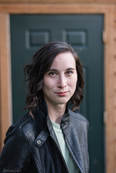
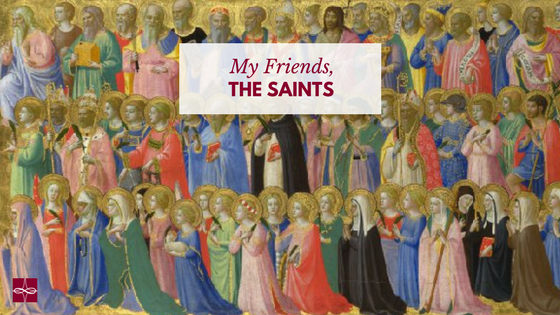



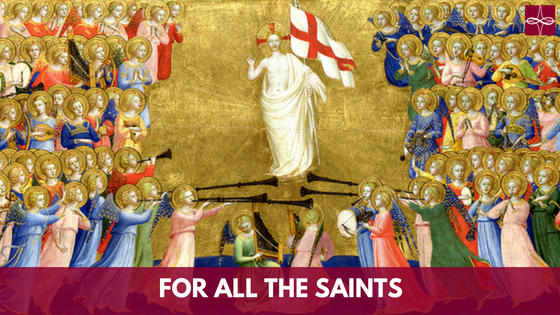
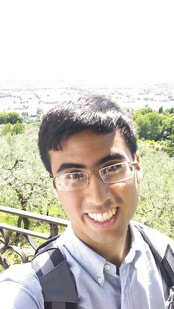
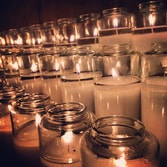
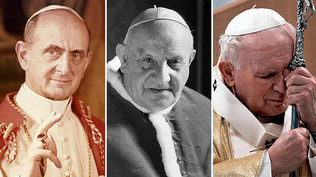
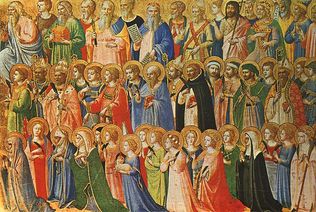
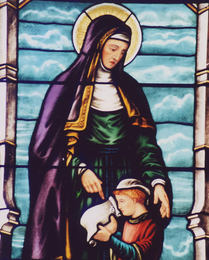
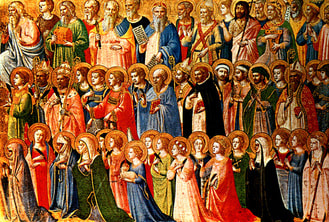
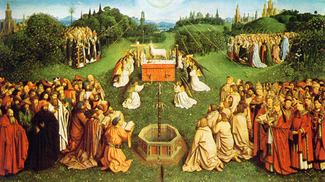
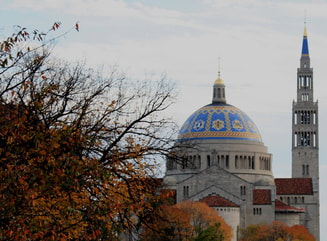
 RSS Feed
RSS Feed